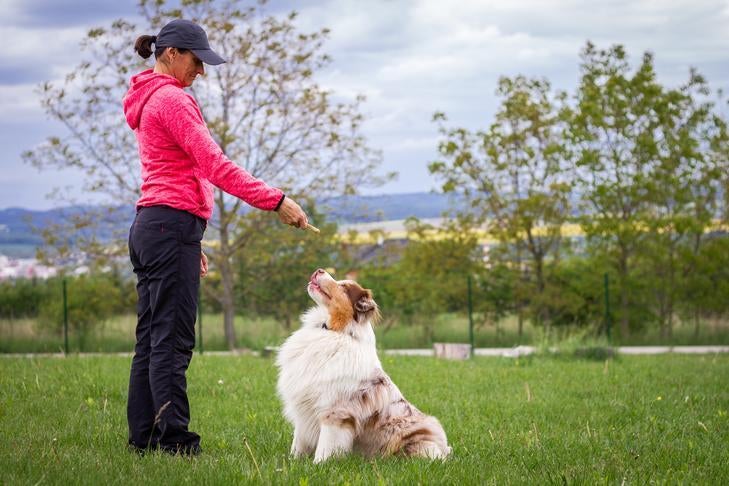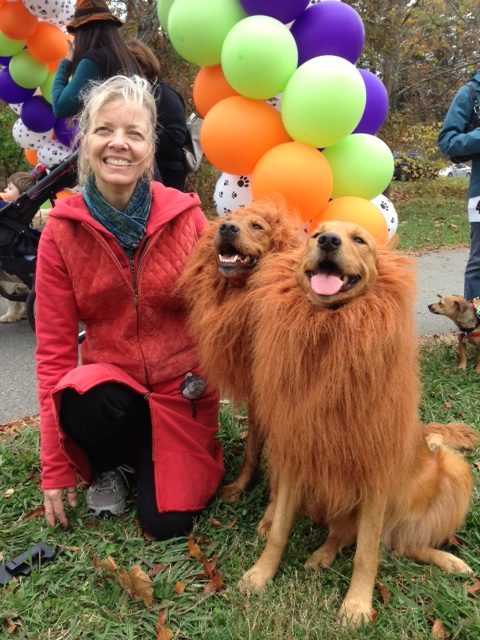The Benefits of Early Dog Training for a Mannerly Family pet
Vital Tips for Successful Dog Training: A Guide for Pet Dog Owners
Efficient dog training is a multifaceted process that calls for a calculated method tailored to both the family pet's personality and the owner's goals. Recognizing exactly how to browse these challenges can significantly improve the training experience, eventually transforming the connection in between owner and canine.
Understanding Dog Habits
Recognizing dog habits is necessary for efficient training and promoting a harmonious partnership in between dogs and their proprietors. dog training. Pet dogs interact mostly with body language, articulations, and activities, making it important for owners to translate these signals precisely.

Socialization plays a substantial duty in pet dog actions; exposure to numerous settings, people, and other pets can substantially impact a pet's character. Moreover, variables such as type characteristics and private character need to lead training techniques, as some breeds might have particular behavior attributes that demand customized techniques. By understanding these aspects, owners can produce a helpful atmosphere that encourages favorable actions, bring about effective training end results and a much deeper bond with their family pets.
Establishing Regular Commands
Efficient communication with your pet dog starts with establishing consistent commands. This foundational aspect of training is essential for cultivating understanding in between you and your family pet. Uniformity in the commands you use makes certain that your dog can reliably associate particular words or expressions with the desired behaviors.
When selecting commands, choose clear, distinct words that are easy to set apart and say from each other. Stay clear of using similar-sounding commands that may confuse your dog. Making use of "rest" and "stay" is suitable, but "sit" and "hit" can lead to misunderstandings.
In addition, preserve the exact same tone and quantity for each command. Dogs are sensitive to vocal signs, so differing your tone can develop confusion.
It is similarly essential to guarantee that all household participants get on the same web page regarding the commands made use of. A united front in command usage will avoid combined signals and reinforce the knowing procedure.
Favorable Support Techniques
The power of favorable reinforcement in pet dog training hinges on its capacity to encourage wanted actions through benefits and praise. This strategy is grounded in the concept that behaviors complied with by desirable end results are a lot more likely to be duplicated. By integrating favorable support into your training regimen, you can effectively shape your dog's behavior in a constructive way.
To execute positive reinforcement, it's important to determine what encourages your dog, whether it be treats, playthings, or spoken appreciation. When your canine carries out a desired action, such as resting on command, promptly award them with a reward or affection. This organization in between the command and the favorable result reinforces their understanding.
It's critical to look at here timing the rewards properly; supplying the reinforcement within seconds of the preferred behavior helps your pet make the connection (dog training). In addition, consistency is key-- make certain that all relative use the very same commands and incentive systems to avoid confusion

Progressively, you can minimize the regularity of treats as your pet discovers the behavior, transitioning to commend or recurring rewards. This method not only cultivates a solid bond in between you and your pet yet additionally promotes a favorable understanding setting, making educating a satisfying experience for both.
Socialization and Communication
Regularly revealing your canine to a selection of settings, people, and various other pets is critical for their social growth. Socialization should begin early, ideally throughout the vital window of 3 to 14 weeks, when young puppies are most responsive to new experiences. However, older pets can additionally take advantage of ongoing socializing efforts.
Present your pet dog to various setups, such as parks, pet-friendly stores, and city locations. This direct exposure aids them adjust to different stimuli, reducing stress and anxiety and fear responses. Encourage positive communications with other pets and people, ensuring that these encounters are risk-free and regulated to cultivate self-confidence.
Utilize structured playdates with courteous canines, as this can boost your pet dog's social skills and instruct them proper actions. Obedience a knockout post classes and training sessions likewise supply excellent chances for socialization, enabling your dog to engage with others in a monitored setting.
Screen your pet's body movement throughout interactions, as this will help you gauge their comfort degree. Gradually raise direct exposure to more challenging circumstances while guaranteeing that each experience declares. A well-socialized pet is more probable to display well balanced habits, making them a happiness to have in any type of setup.
Attending To Usual Training Obstacles
Every pet dog proprietor will come across training obstacles at some time, no matter their pet's age or socializing degree. Identifying common problems such as stubbornness, distractions, and fearfulness can assist in establishing reliable approaches for renovation.

Disturbances during training sessions can derail focus. To battle this, start training in a quiet atmosphere with minimal stimulations. Gradually introduce interruptions as the dog becomes extra proficient in commands. Short, regular training sessions are also reliable in preserving focus.
Fearfulness can hinder a dog's discovering procedure. Progressive desensitization to the resource of anxiety, paired with positive support, can aid minimize anxiety. Persistence is critical; never force a dog into a circumstance that creates distress, as this might exacerbate the problem.
Ultimately, understanding and resolving these typical obstacles with a structured method will promote an extra efficient training experience, enhancing the bond between dog and proprietor while promoting efficient understanding.
Conclusion
In recap, effective dog training relies upon a comprehensive understanding of canine habits, the facility of regular commands, and the application of positive support techniques. Socialization plays a crucial function in establishing well-adjusted pet dogs, while addressing common training challenges calls for persistence and versatility. By implementing these necessary approaches, animal owners can promote a solid bond with their pet dogs useful reference and promote desirable actions, eventually leading to a harmonious connection in between humans and their canine friends.
Comprehending pet dog actions is vital for efficient training and fostering an unified connection in between pooches and their proprietors.Socializing plays a considerable duty in pet dog behavior; direct exposure to various settings, people, and various other animals can substantially affect a canine's temperament.The power of positive support in canine training exists in its ability to urge wanted actions via incentives and appreciation. By including favorable reinforcement into your training regimen, you can properly form your canine's behavior in a useful manner.
In summary, effective pet dog training counts on a detailed understanding of canine habits, the facility of constant commands, and the application of positive reinforcement techniques.